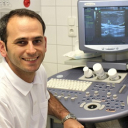
Flaking skin around the nipple of the breast in a woman does not always indicate an allergic reaction or skin disorder. Such symptoms may show the presence of Paget's disease. The condition is rare, but this type of breast cancer should be ruled out before treating any rashes in the nipple and areola area.
What is Paget disease
Paget disease (also Paget’s disease) is an extremely rare form of breast malignancy involving the ductal orifice, nipple and breast tissue. It constitutes 0.5-5% of all breast cancers. It is diagnosed in women, but men can also be affected. In the latter case, the disease has an unfavorable prognosis, since due to the smaller volume of tissue, malignisation happens much faster. In addition, since it is not a specific male pathology, in men it is detected more often at late stages. In women, nipple cancer is detected more often at the age of 50-60. In some cases the condition occurs at 85 years of age.
Most patients have local foci of breast cancer. The invasive form causes metastases in 90% of cases. Paget's cancer is characterized by high aggressiveness. It progresses rapidly, but at the same time, the disease is very well studied, and seeing a doctor in time provides good chances for full recovery.
Causes of the disorder
There is no single point of view on the origin of malignant lesions in the superficial skin layer of the nipple. According to the epidermotropic theory, the Paget's cells that make up the foci develop from mammary adenocarcinoma. In this case, tumor cells of the milky duct epithelium get to the nipple epidermis through the ductal system. This theory is confirmed by the similarity of Paget's cells and ductal epithelial cells detected by immunohistochemical staining.
Doctors adhering to the transformation theory believe that Paget's disease arises from the epidermal cells (keratinocytes) independently of any breast malignancy and is actually an epidermal carcinoma in situ. This assumption is supported by the fact that some patients affected by Paget's disease do not have carcinoma in the breast tissue. Moreover, in those of them who had breast cancer, the tumor was often located far from the nipple, which could mean that there were two independent cancerous processes.
One can also mention certain risk factors, including:
- hereditary predisposition;
- over 60 years of age;
- severe overweight;
- recurrent nipple trauma;
- alcohol abuse;
- hormonal disorders;
- scleroderma or uterine cancer anamnesis;
- long-term use of hormonal drugs;
- long-term contact with carcinogens.
Symptoms of Paget’s disease
In the initial stage the condition may look like a skin disorder. The symptoms can suggest an allergic reaction or dermatitis. But there are signs that should signal alert, such as:
- changes in the nipple pigmentation;
- coarse skin;
- flaking and itching;
- tenderness;
- light pain.
To get rid of the troublesome symptoms, patients would often use skin-softening creams. As a result, the clinical manifestation becomes blurred, so patients do not get to see a doctor before the condition reaches an advanced stage.
The Paget disease progress can be recognized by the following symptoms:
- swelling of the soft tissue in the nipple area;
- severe pain;
- nipple discharge;
- ulcers and skin erosions;
- enlarged lymph nodes;
- general weakness, feaver.
If in the early stages the shape of the nipple remains unchaged, but with disease progress it becomes flat and inverted.
CLASSIFICATION OF PAGET'S CANCER
Most cases of the disease belong to the so-called classic type, much less common are isolated, anaplastic and some other variations. They differ in their histological, immunohistological and clinical presentation.
Paget Disease Types
| Type | Features |
| Classic |
|
| Isolated |
|
| Anaplastic |
|
| Invasive Paget's disease |
|
| Pigmented Paget’s disease |
|
Diagnosis
Any breast changes is a reason to see a breast care provider. The doctor shall examine and interview the patient, and recommend necessary tests. If there Paget's cancer is suspected, a biopsy of gland tissue with a subsequent histologic study is necessary. Further tests are performed to exclude other tumor typese, such as:
- mammography;
- breast MRI.
When lymph nodes are affected, ultrasound, biopsy, computed tomography. With breast cancer it is important that diagnosis should rule out eczema, dermatitis, breast tuberculosis, melanoma, syphilis, mycosis, basalioma.
Paget disease therapy options
If the disease was diagnosed early enough and therapy was started at the right moment, complete cure it is usually possible.
Since in the early stages of this type of malignant tumor has clear boundaries, surgical resection of abnormal tissue is number one option. To prevent the presence of residual tumor cells, the entire nipple and areola are removed. In such cases, radiation and/or chemotherapy can usually be avoided after surgery.
If Paget's disease arises from ductal carcinoma in situ (a tumor originating from the milk ducts and limited to a single focus), organ-preserving surgery, in which both tumors are removed at the same time, can be attempted.
However, if the underlying carcinoma is already widespread, mastectomy followed by reconstruction, e.g., with implants, is the treatment of choice.
In addition to surgery, adjuvant treatment in the form of radiochemotherapy (a combination of cytostatic drugs and radiation) is recommended for advanced tumors. In this case, radiotherapy is not applied to the tumor area, but to the lymph nodes in the lymphatic drainage area of the affected breast. This is done to prevent metastases from spreading to other organs.
Prognosis and prevention
Mammary Paget disease very rarely occurs as an isolated tumor. In most cases, when it is detected, the malignant process is found not only in the nipple and areola, but also in the breast itself. Therefore, the prognosis of the disease is closely related to the prospects of the underlying cancer treatment. These, in turn, depend on the stage at which the cancer is diagnosed and its treatment is initiated. The type of cancer associated with Paget disease also plays a key role.
There is no specific way to prevent the disease.
SECOND OPINION
A rare disease can be a challenge even for an experienced doctor. In the case of Paget's disease, one of the most likely mistakes is that its external manifestations, especially in the early stages, can easily be mistaken for symptoms of other conditions, such as certain skin diseases. Therefore, suspicious visible changes in the nipple and areola area are always a good reason to hear the opinions of different specialists - for example, not only a dermatologist, but also a breast care provider.
Another peculiarity of this type of cancer is that such tumors are in the vast majority of cases not single ones. In this regard, a well thought-of diagnostic plan is important; it should be aimed at the timely detection of a breast tumor, which, as a rule, does not just exist in parallel, but is the cause of the malignant cellular degeneration in another part of the breast. To be sure, it is worth seeking a second opinion, which will probably improve the existing schedule. This will ensure carcinoma detection as well as the proper diagnostic workup to determine its significant features.
Getting to know different viewpoints while making decision about your therapy is equally important. The available variety of treatment options for breast malignancies, as well as their combinations, allows for the possibility of different therapeutic strategies. For the patient, of course, it is vital to find out which of them is the best. Fortunately, nowadays it is possible to go beyond the competence of one doctor, one clinic, or even one country for this purpose, and to take advantage of international experience with the help of remote breast care advice.
REFERENCE LIST
- Paget's disease of the nipple, 2013г. Ana C Sandoval-Leon.
- Paget's disease of the breast, 2012г. Juliana Corrêa Marques-Costa.
- Paget's disease of the male breast in the 21st century: A systematic review, 2016 г. Scott J Adams.
- Paget's disease of the breast: strategy to improve oncological and aesthetic results. 2021 г. G Franceschini.
- Image source: Free Stock photos by Vecteezy


Comments — 1
Эльвира Бережнова
Доброго дня! Могут ли немецкие специалисты помочь в определении диагноза по стеклам гистологии и маммограммам? В России мне нексколько клиник дают разные заключения по подозрениям на рак Педжета. Не знаю, кому верить.